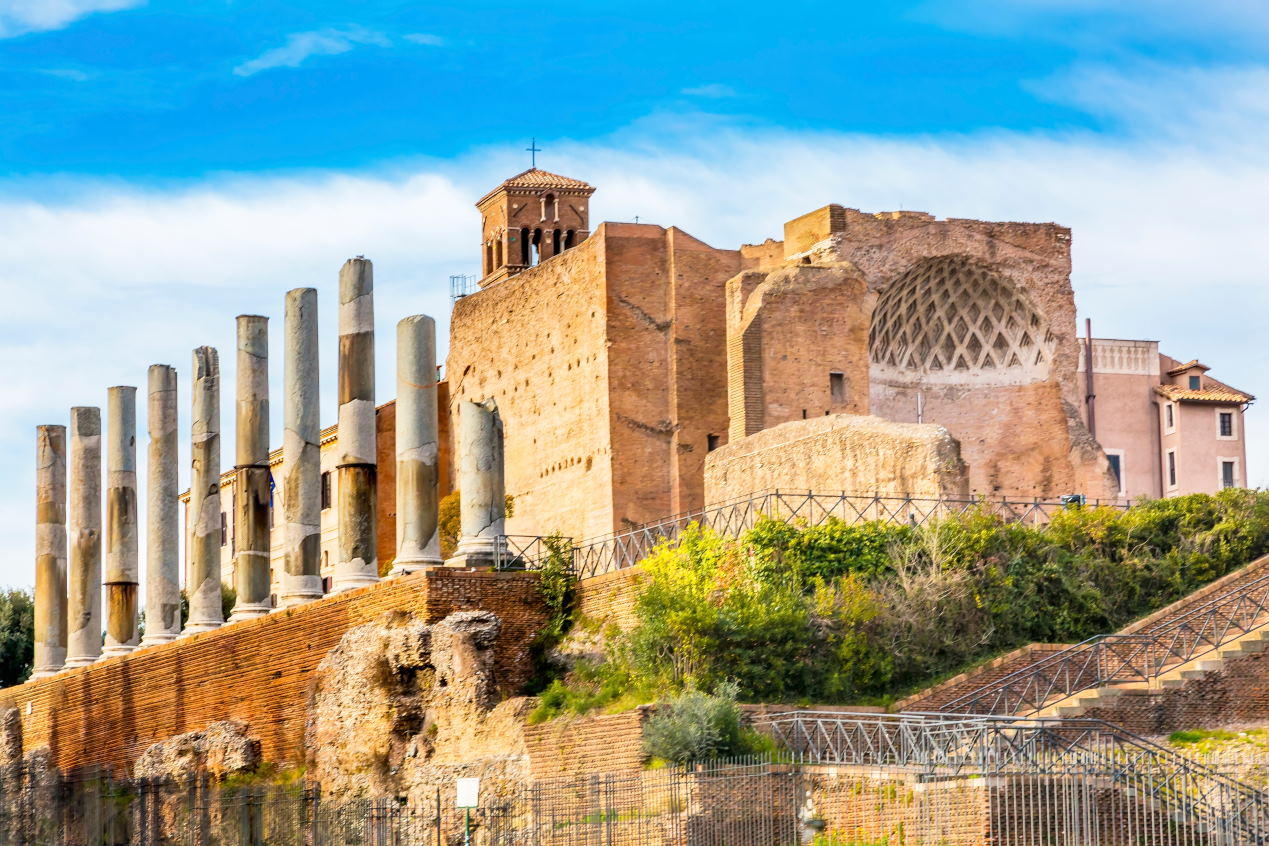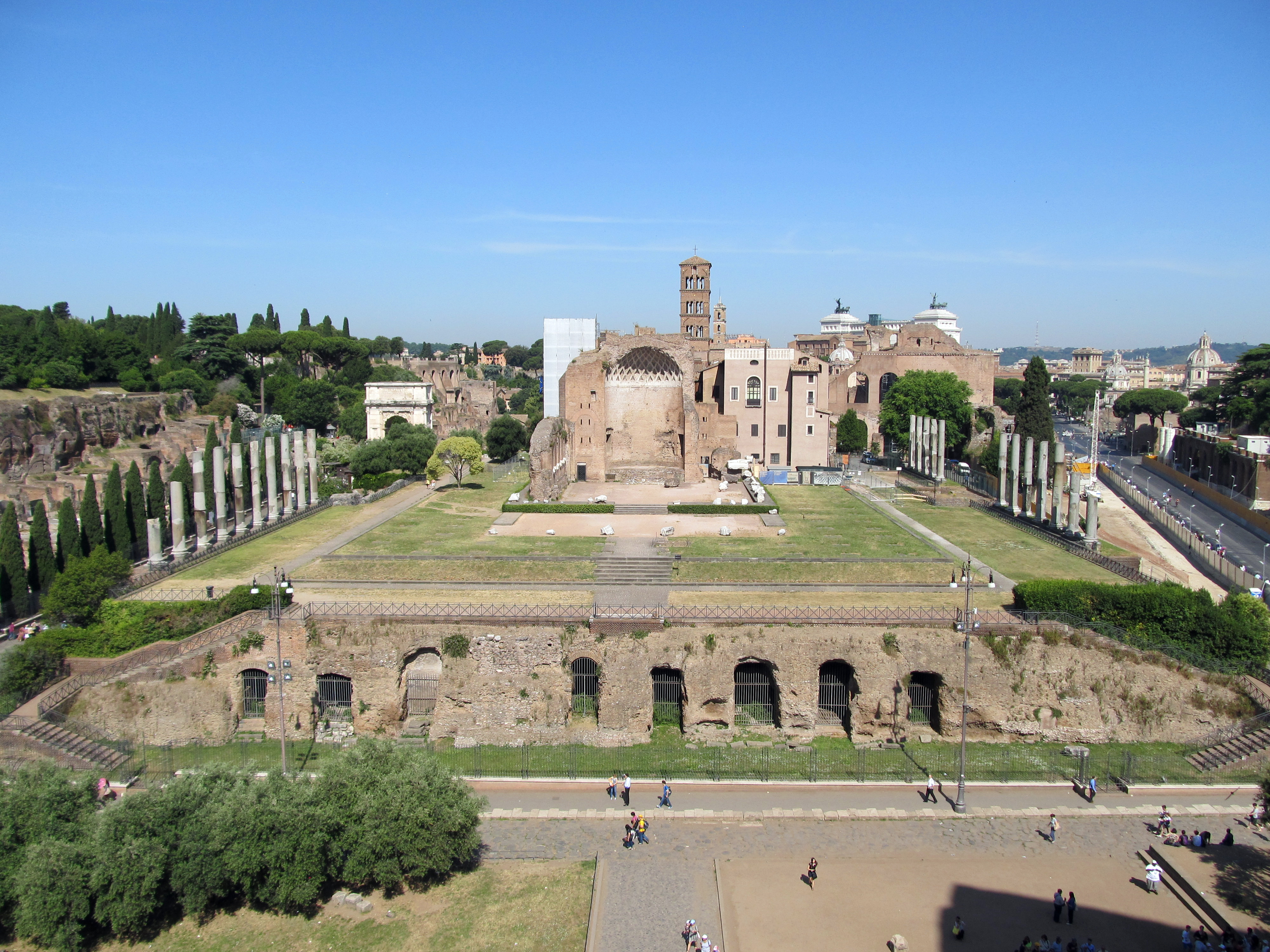“Step into the timeless embrace of love and beauty at The Temple of Venus and Roma, where ancient majesty meets eternal allure.
 The Temple of Venus and Roma designed by the emperor Hadrian © Carole Raddato
The Temple of Venus and Roma designed by the emperor Hadrian © Carole Raddato
The Temple of Venus and Roma (Latin: Templum Veneris et Romae) was the largest temple in Ancient Rome. It was located at the far east side of the Forum Romanum, near the Colosseum. It was dedicated to the goddesses Venus Felix (Venus the Bringer of Good Fortune) and Roma Aeterna (Eternal Rome). The designer was emperor Hadrian. Construction on the temple began in AD 121. Although the temple was officially inaugurated by Hadrian in 135, the building was finished in 141 under Antoninus Pius.

The building measured 110 m in length and 53 m in width. It was placed on a stage measuring 145 m in length and 100 m in width. The temple itself consisted of two main chambers (cellae), where the cult statue of the god was, in this case the statues of Venus, the goddess of Love, and Roma, the goddess of Rome, both of them seated on a throne. The cellae were placed symmetrically back-to-back. Roma’s cella was facing west, looking out over the Forum Romanum while Venus’ cella was facing east, looking out over the Colosseum. Each cella had its own line of four columns at the entrance.
As an additional clever subtlety by Hadrian, Venus also represented Love (Amor in Latin), and “AMOR” is “ROMA” spelt backwards. Thus, placing the two divinities of Venus and Rome back-to-back in a single temple creates a further symmetry with the back-to-back symmetry of their names as well.

When Hadrian asked Apollodorus, the most celebrated architect of the time, to comment on his design, he allegedly replied that the temple was too low and the statues of the gods too tall for the space they occupied. “‘For now,’” he said, ‘if the goddesses wish to get up and go out, they will be unable to do so’” (Dio, LXIX.4.1-5). Hadrian was so exasperated at the remark that he banished Apollodorus and later may have had him put to death.
Related Post
A shocking documentary proves that mermaids do exist
SHOCKING Revelation: Thuya, Mother of Queen Tiye, Was the Grandmother of Akhenaten and Tutankhamun—What Ancient Egyptian Secrets Did She Leave Behind?
Breaking News: Astonishing Discoveries at Karahan Tepe Confirm an Extraterrestrial Civilization is Hiding on Earth, and NO ONE Knows!
Breaking News: Researchers FINALLY Discover U.S. Navy Flight 19 After 75 Years Lost in the Bermuda Triangle!
NASA’s Secret Investigation: Uncovering the Astonishing Mystery of the UFO Crash on the Mountain!
Explosive UFO Docs LEAKED: Startling Proof That Aliens Ruled Ancient Egypt!